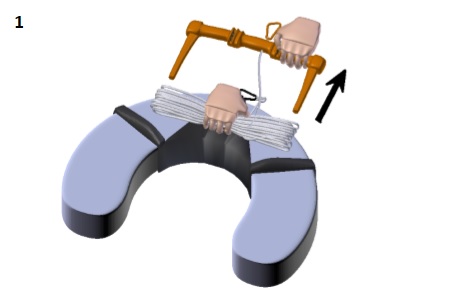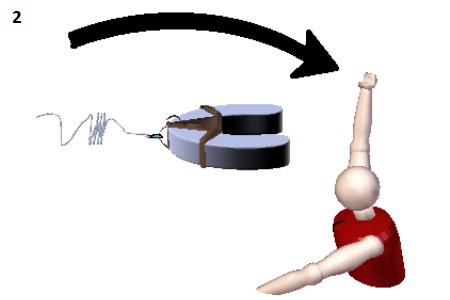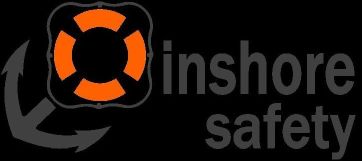Welcome at Inshore Safety
Write us to: info@inshoresafety.com or fill the form.

Phone
+36 70 336 3907
Working Hours
We are happy to meet you during our working hours.
- MonCET 8:00 - 17:00;
- TuesCET 8:00 - 17:00;
- WedCET 8:00 - 17:00;
- ThurCET 8:00 - 17:00;
- FriCET 8:00 - 15:00;
How to use CLS
In an emergency lifesaving situation, the CLS Upgrade Kit may be used immediately, provided that no obvious damage or defect is visible that would clearly make its use unsafe. Rescue operations must not be delayed due to detailed inspection of the product.

For the full Instruction For Use with all the safety warnings please click here.
- Grasp the assembled unit and place it so that the plastic handle faces upward and the towing eye faces toward you. With your dominant hand, firmly grip the webbing handle together with the coiled floating rescue line. With your other hand, release the plastic handle retaining hook-and-loop fastener and remove the plastic handle with the line holder from the storage pockets.

- Throw the rescue device together with the floating rescue line toward the person in distress. If the throw is inaccurate and the rescue device does not land in a suitable position, retrieve the unit, rewind the line correctly, grasp the webbing handle and the coiled line together again, and repeat the throw. Correct line winding is described in Step 5 below.

- While the person in distress secures themselves to the rescue device and assumes a stable position, attach the coloured carabiner to a suitable fixed point (e.g. boat railing). Pull the person to safety using the floating rescue line.

- In strong currents, flowing water, or when the vessel is moving, increased pulling force may be required. In such cases, guide the line segment leading toward the person in distress into the rope deflector groove, wrap the line around the plastic handle, and lead it into the V-cleat so that the line is securely gripped.
Pull the handle toward you. When slack occurs, push the handle forward while controlling the free end of the line with the other hand. By slightly tilting the handle, the line can be released from the V-cleat during forward movement and re-engaged for pulling. Repeat this motion until the person is safely recovered.

- After completing the rescue:
– Remove the unit from the water.
– Wind the floating rescue line onto the line holder as follows:
o Pull the coloured carabiner into the plastic handle until it stops.
o Hold the line holder with its arms pointing upward.
o Wind the line in loose figure-eight loops, starting from the plastic handle and moving toward the rescue device.
o While winding, inspect the line for damage.
– Insert the line holder back into the storage pockets and secure the plastic handle tightly with the hook-and-loop fastener.
– Check the rescue device and all components for visible damage.
– Return the unit to its standby position.
Other uses
- If a rescue scenario requires the use of the rescue device without the floating rescue line, the rescue device can be easily disconnected from the line by releasing the black carabiner.
- If only a line throw is required, the detached plastic handle and floating rescue line unit may be used independently. The handle is buoyant, clearly visible, easy to throw and easy to grip.
Redesigned tools – Simplified tasks
Innovation for Boating Safety

